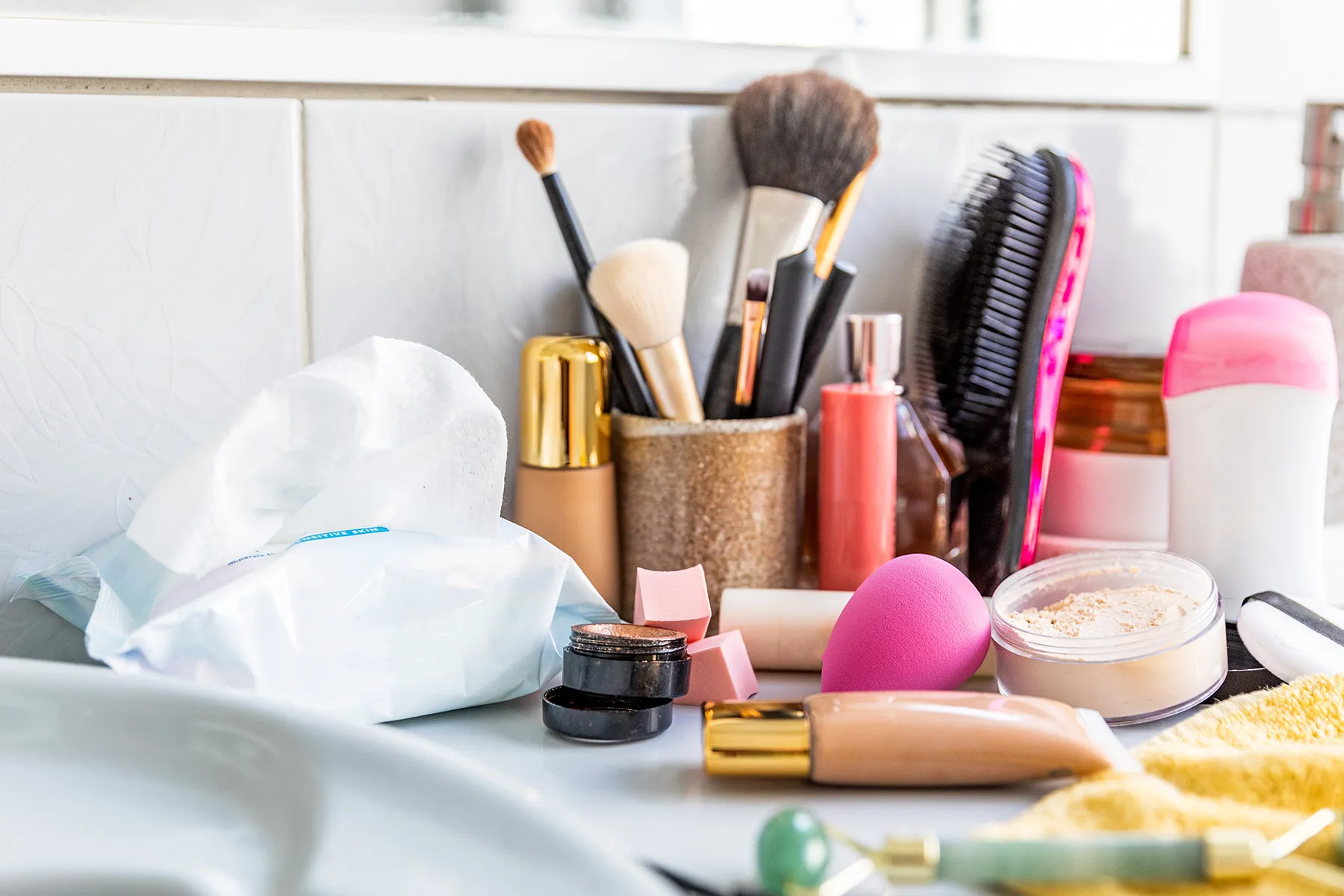Psoriasis is a common skin disease that can affect different parts of your body, including your face. It causes red, scaly patches that might be worse for a few weeks or months or less noticeable at times.
Some people with the condition choose to cover their psoriasis with makeup. While some doctors suggest you avoid makeup during a flare, they also realize that the condition is chronic, and you might prefer to cover your psoriasis. Since the symptoms can cause skin flakiness and sensitivity, it’s important to follow certain steps if you choose to use makeup.
When you shop for makeup, it’s best to look for moisturizing products and avoid those that could dry out your skin. “I tend to advise my patients to stay away from powders or agents that would be more drying or might adhere to flaking or scaling of the skin,” says Ashley Wentworth, MD, assistant professor of dermatology at Mayo Clinic. “Try for makeup products that might have more of a cream or an oil base to it to hydrate the skin.” Look for makeup containing hyaluronic acid, which is hydrating.
Wentworth also suggests avoiding products that contain essential oils, botanical, organic, or all-natural ingredients. “Just as peanuts can cause allergy or poison ivy, which is natural, can cause a skin rash … those all can irritate the skin,” she says. “Just because something is synthetic, or manmade doesn’t make it any more dangerous for the skin. In fact, that often means that it’s been better studied, trialed, and tested.”
But synthetic products with strong fragrances, dyes, or alcohols can also dry out and irritate your skin. Try to avoid makeup brands that have long lists of these ingredients.
Once you’ve found the right makeup products, prepare your skin before you apply them. “If you have a prescription medication that your dermatology provider has prescribed, that should go on first and absorb into the skin for several minutes,” Wentworth says.
After that, you may want to apply extra moisturizer, cream, or ointment to give your skin extra hydration. Wentworth says that this will help the flaky skin “camouflage better into the background of the skin that’s not affected by the psoriasis.”
If you’re going outside, you might also want to use extra protection, like broad spectrum sunscreen. “We definitely encourage the use of sunscreen with SPF 30 or higher on the face on a regular basis,” she says. “After the use of the topical prescription products, and then any sort of moisturizer, would be an application of sunscreen.”
Without following these steps, your complexion may become cakey after using makeup on dry and scaly skin.
In order to not irritate your psoriasis, it’s best to stick with light and simple makeup. For foundation, you’ll want to start with a sheer base and then go back and build on top of the areas with psoriasis. Buff the edges into the base so it blends well. You can do this using your fingers, makeup sponge, or foundation brush.
You may not need to use concealer if you’re able to build your foundation to your preferred coverage. But if you do want to use concealer, use a nonmatte option. Apply it to your skin and let sit for 1 minute to thicken before you blend it in.
Using other products like mascara, eyeliner, eyeshadow, and other specific kinds of makeup depends mostly on your preference. “It’s not unsafe. … It would be unlikely to trigger a worsening of psoriasis or spreading of psoriasis,” Wentworth says. “However, when you have an active area of psoriasis, any sort of product that is not intentionally used as a medication, could have the potential to irritate that skin in that location and make the psoriasis appear more prominent.”
It’s wise to test products first. Every person’s skin will look different with makeup on. Your psoriasis may react well when you use eyeshadow. But someone else’s psoriasis may seem flakier after they use a certain product.
Wentworth suggests trying products before any essential plans. “If you’re getting married in a month and you want to try (a type of makeup), try it out before to see what works for you and your skin type and tones. Then you’ll know what would be best to pick on that day if you do have active areas of involvement.”
Take care when you take off your makeup. “Sart out by using a white, unscented bar soap to create a foamy wash in your hands,” Wentworth says. “Gently massage that into the face … and then gently rinse that off. Then use a micellar-based facial makeup remover or cleanser to remove any residual makeup that is still on.”
https://img.wbmdstatic.com/vim/live/webmd/consumer_assets/site_images/articles/health_tools/eczema_facial_care_slideshow/1800ss_getty_rf_Makeup_products.jpg
2023-05-30 22:20:31





